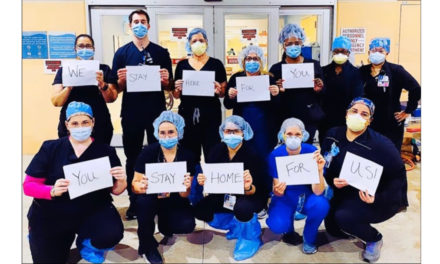Sepsis in the ED and Hospital: Is Hospice an Often-Overlooked Solution?
Two recent medical studies underscore what many emergency room physicians and healthcare professionals already know about sepsis: It is a common, costly and largely unpreventable condition and a significant cause of in-hospital mortality and readmission.
Separate studies in Chest® Journal (Gadre S et al; March 2019) and JAMA Open Network (Rhee C, et al; February 2019) conclude that patients who ultimately die of sepsis in the hospital typically exhibit underlying diseases and comorbidities that complicate treatment and contribute to death.
With only 1 in 8 sepsis-associated deaths considered to be preventable, the findings reinforce VITAS® Healthcare’s pursuit of treatment and prevention strategies that offer sepsis-vulnerable patients targeted, appropriate care and timely referral to hospice.
According to the research, sepsis disproportionately affects patients who are elderly, have severe comorbidities and have impaired functional status. Some may receive optimal, guideline-compliant care yet still die due from sepsis or underlying comorbidities.
VITAS supports targeted care and care transitions that keep vulnerable patients out of the hospital and help hospitals improve their quality and mortality metrics by:
- Heightening awareness of sepsis vulnerability
- Identifying patients at risk of sepsis once they enter the hospital
- Improving management of the care plan consistent with the patient’s goals
The JAMA study found that 40% of patients who died of sepsis in the hospital were eligible for—but never referred to—hospice care upon admission. Eligibility factors included underlying cancer (20%), severe dementia (5%), severe stroke (4%) and severe chronic lung disease (4%).
Hospice: an option for seriously ill, sepsis-vulnerable patients
The fact that 40% of sepsis-vulnerable patients are eligible for hospice care when they arrive at the hospital—but are never referred—is an opportunity to both reduce hospital mortality statistics and provide more targeted, patient-concordant care.
Just as VITAS encourages doctors and patients to engage in early and ongoing goals-of-care conversations for any serious disease, our hospice experts also encourage hospitals, emergency physicians, specialists and other healthcare professionals to engage in “whole-person” evaluations of seriously ill, sepsis-vulnerable patients when they are admitted to the hospital or ED:
- Who is this patient and what are their goals for the care they receive?
- How long has he/she been sick?
- What other underlying diseases or comorbidities are present?
- Where is this patient in the disease trajectory?
- Where was the patient before admission to the hospital?
- How likely is this person to die within 12 months?
- And most importantly, would hospice care be a better alternative for this seriously ill patient?
Asking holistic questions in a timely and honest manner ensures that seriously compromised patients will not have to die of sepsis in the hospital and can instead take advantage of the benefits and quality-of-life focus of compassionate hospice care.
VITAS experts offer free monthly webinars to educate healthcare professionals on the benefits of hospice, including discussions on sepsis, hospice eligibility guidelines and other topics. Find details at VITAS.com/webinars.
For more information about hospice eligibility guidelines for sepsis, visit VITAS.com.
For seamless, secure hospice referrals 24/7/365, download the VITAS mobile app at VITASapp.com.
Samantha manages fcep.org and publishes all content. Some articles may not be written by her. If you have questions about authorship or find an error, please email her directly.


 This article originally appeared in EMpulse Fall 2019. View the
This article originally appeared in EMpulse Fall 2019. View the 






